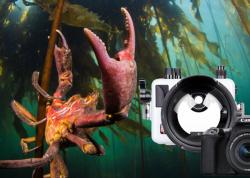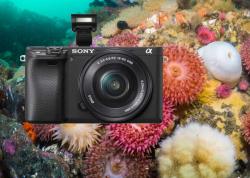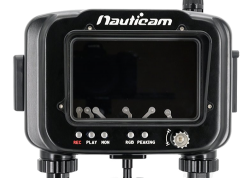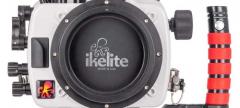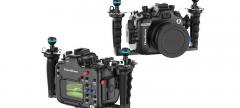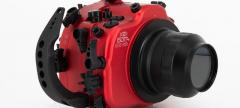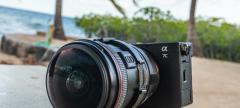Photographing Signal Blennies

Signal blennies are an elusive fish. You could spend years diving in the Sea of Cortez and not see one. But if you know where to look, they're everywhere. The gulf signal blenny, or Emblemaria hypacanthus, is an extremely small blenny endemic the Gulf of California. They inhabit small holes in rocks and shells and feed primarily off of zooplankton. Reaching a total length of 5 cm (2 inches) as mature adult, they are quite difficult to photograph. Yet, when male signal blennies emerge from their holes on full display, for a fraction of a second they are a vibrant work of art. A miniature psychedelic dragon, of sorts.
Finding Signal Blennies
As I mentioned, signal blennies are easy to find when you know where to look. The best place to look is rubbly sandy bottoms near rocky reefs in the Sea of Cortez. The rubble in the sand will often be a mix of rock and shells, with plenty of holes for signal blennies to live in. As signal blennies are very shy, you may not see any in your immediate area. You'll need to keep your head pointed strait out to see if you see a small flash of a fish, darting up and out of its hole. Once you find a signal blenny, you are likely to find others nearby as they live in groups with carefully defined territories. The colorful sex, males, periodically emerge from their holes and flash their dorsal fins in quick succession. This is to define its territory to other males and is the most likely moment that you'll see a photo subject.
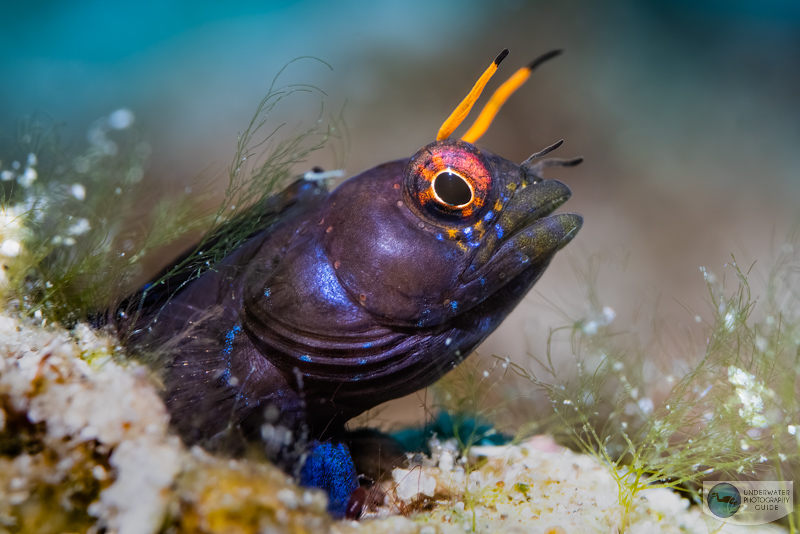
Approaching Signal Blennies
Signal blennies are extremely difficult to approach. In fact, they are, in my opinion, one of the hardest fish to photograph for this reason. In areas with a low density of blennies, the signal blenny will likely remain in its hole when it sees you coming from two meters away. This is obviously too far to capture the males' beautiful displays. But you can still photograph a shy blenny in its hole.
If you are lucky enough to find an area with a high density of blennies and the male blennies are living closely to each other, then you are more likely to be able to approach the blennies. Look for males that are frequently swimming up and flashing their dorsal. They are likely too close to another male for comfort and will allow you approach more closely. Please refrain from placing blennies close to each other to evoke behavior - as you may have seen in videos of fighting blennies. Although they are small, they can do serious damage to each other and I have seen some photos of fighting blennies with ripped dorsal fins.
I have noticed that signal blennies can change color very quickly. Although some guide books indicate that younger males are lighter in color, I have in fact noticed that signal blennies get lighter if they feel they are too close to a male.
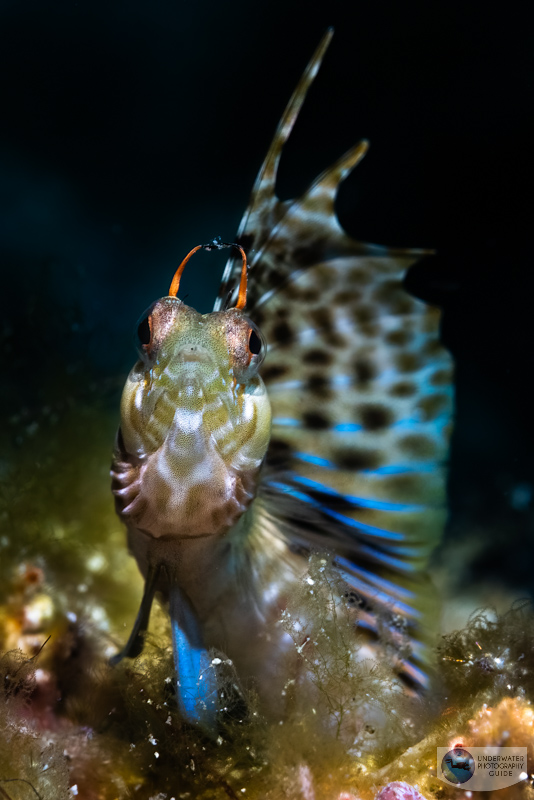
Tips for Photographing Signal Blennies
1. Put your camera's drive mode into high continuous shooting
Signal blennies only show their dorsal fin for a fraction of a second, so you'll need to shoot photos in quick succession in order to capture the behavior. It's a "spray and pray" situation
2. With black signal blennies try to capture a light (e.g., slightly over exposed) or blue background
It can be tempting to photograph black signal bennies with a snoot, but it doesn't work - I've tried. It's best to slightly over expose black signal blennies so that you capture the details in their colors and get a nice light background for contrast. A blue background looks nice as well.
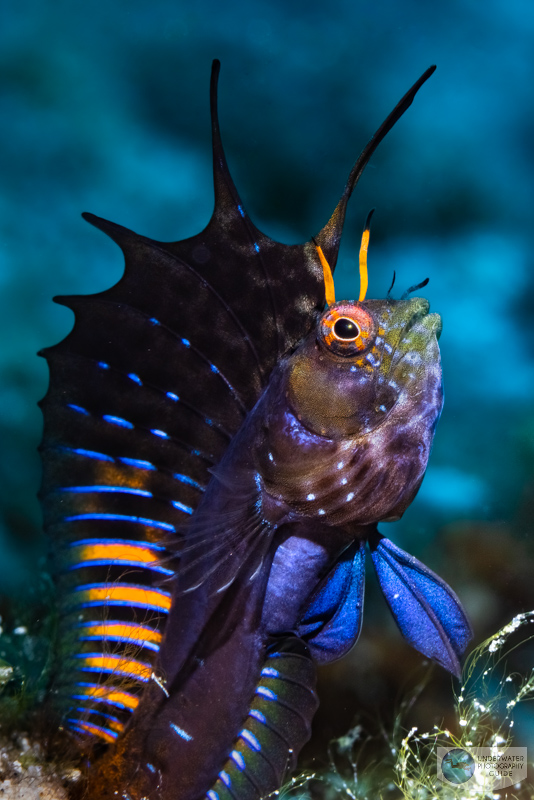
3. Shoot at a high shutter speed and small apertures (i.e., high f-stop)
This ensures that you freeze the blenny's motion and have as much of it in focus as possible.
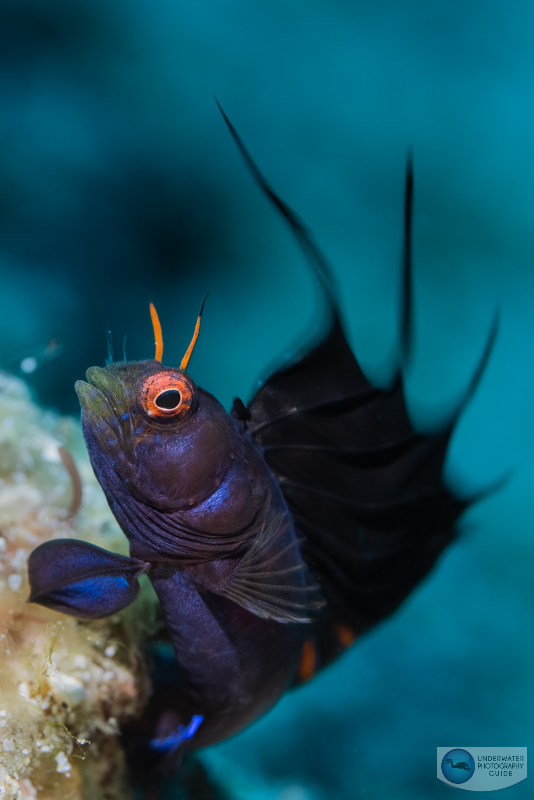
4. Use autofocus tracking or single point AF wisely
When signal blennies pop up to display their dorsal they will often move up and to the right or left. If you are shooting with a single point AF system, move your AF point above and to the side of the signal blenny when it is resting. Using an AF tracking system could also work well, but even my Canon EOS R5 had trouble keep up with the eye at times
5. Take your time
Getting a great signal blenny shot likely won't happen on your first try. Take your time and don't be afraid to spend an hour with a subject and multiple dives.
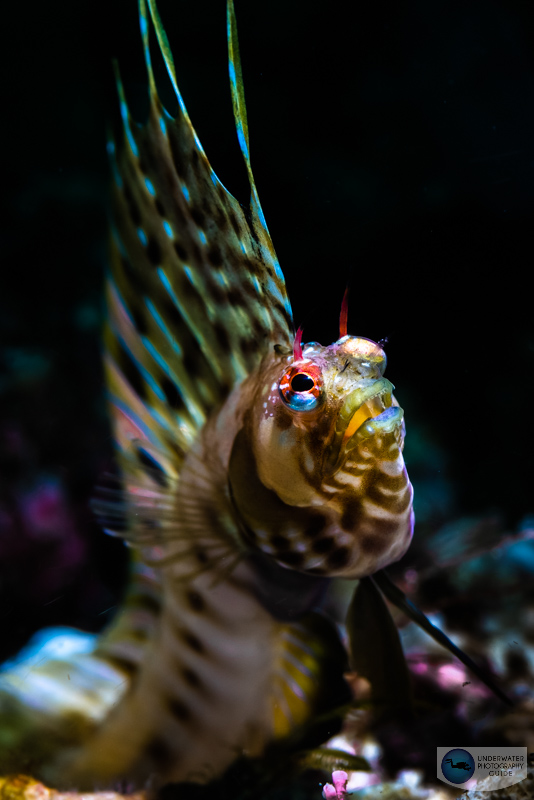
RECOMMENDED ARTICLES
SUPPORT THE UNDERWATER PHOTOGRAPHY GUIDE:
The Best Service & Prices on u/w Photo Gear
 Visit Bluewater Photo & Video for all your underwater photography and video gear. Click, or call the team at (310) 633-5052 for expert advice!
Visit Bluewater Photo & Video for all your underwater photography and video gear. Click, or call the team at (310) 633-5052 for expert advice!
The Best Pricing, Service & Expert Advice to Book your Dive Trips
 Bluewater Travel is your full-service scuba travel agency. Let our expert advisers plan and book your next dive vacation. Run by divers, for divers.
Bluewater Travel is your full-service scuba travel agency. Let our expert advisers plan and book your next dive vacation. Run by divers, for divers.








